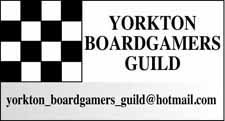Over the years only a few miniature games have ever had just that 'wow' factor which says they should be a hit with gamers.
Warmachine was the first, Malifaux another, and I must say Godslayer from Megalith Games makes the rather short list as well. This is the first of a two-part look at the game.
"Set in a rich and detailed fantasy universe named Calydorn, Godslayer is a fast and tactically challenging tabletop skirmish game played with highly detailed metal miniatures. The game is designed for two or more players and offers a totally new gaming experience with many aspects never before seen," details the game's website.
"In the world of Calydorn it is common for charismatic or brawny leaders to attract loyal troops, heroic individuals, and terrifying creatures to their cause - be it noble or nefarious. As a skirmish game Godslayer allows players to field a group of warriors in combat engagements. These so called warbands represent hunting parties, scouting forces, raiders or simply bands of adventurers, mercenaries, or bandits, etc."
The Nordgaard have a Viking/dwarf vibe, the Wildfolk of Annyr are more druidic, the Halodynes strongly influenced by the Roman legions etc.
Visually the six current factions are diverse.
And when you get the game it comes with two soft bound books in a nice slipcase.
The first is a nicely detailed rulebook, as you would expect.
The second is an amazing background tome, delving into the world of Calydorn and its factions. Most miniature games offer up what we generally look at as 'fluff'. Material of interest but not essential to playing the game. In most cases it is mixed into the rulebook, but Godslayer takes background to a new level, and for many gamers that will be a great lure to the game.
When I had a chance to correspond with game co-creator David Saunders I had to ask where the idea for a game which borrowed on a lot of historical eras in terms of factions came to be.
As it turned out Saunders likes to share the story in some considerable detail.
"André (Schillo) and I (co creators of Godslayer) had been playing lots of Warhammer and Mordheim," said Saunders. "Andre had also played 'Warmahordes' and I was into Confrontation. We had also sampled some other tabletops, and with every game we were a little unsatisfied.
"Now these are all good successful games, and I have no intention to knock them here, but personally we found in every system both good points and bad points. No system was really completely satisfying for us. Andre also had a lot of experience with board games and I had a lot of years with RPGs."
And so they took on the task of creating the game they could not find on the market.
"This idea blossomed and required a mythological-style fantasy world in which to place the armies, so I developed a basic world of geography and history.
"At the same time Andre and I saw the rise of some new small tabletops, and Andre had the idea 'hey we can do that, and we can do it even better!'
"I agreed with Andre, and I told him about my secret mythological project and he was convinced that this setting would be new and attractive to players.
"So we decided to use the fantasy world which I had been developing, and this became Calydorn, the world of Godslayer.
"The name of the game came out of the mythology and history I had created for the world - the Godslayers are a set of weapons which had been crafted for killing demons and which had then been turned against the gods."
"I personally hated the turn-based systems where one person does all the moving of their entire army, then all the shooting then all the magic, then all the melee for their entire army, and then one-hour later the opponent gets to do something," he said.
"Seriously I have played large games where each turn took almost two-hours.
"So I championed the unit by unit turnaround where I activate a unit and do everything for that one unit then the opponent activates a unit and does all actions for that unit etc.
"This IGOUGO turnaround keeps both players more engaged in the game, making it more exciting, as well as providing a constantly changing tactical situation on the table! This is basically how chess works.
"And for skirmish games it is much better than the alternative.
"Imagine if you were playing chess, if one player would move all his chess pieces then the opponent would move all of his pieces. That's not very strategic."
Saunders said there were other mechanics goals they wanted to achieve from the start, including;
Counter attacks for models attacked.
Charges should not be so devastating; they should definitely be worth doing, but they should also be costly to the charger unless they buff their models a lot before charging. This is just how most battles really are.
Simultaneous combat. That because in reality combat is simultaneous
In a nutshell Saunders said he and Schillo were looking for realism with Godslayer, something not usually an ideal goal for a miniature tabletop wargame, something he added they were aware of.
There is more to Saunder's look at this great game, but that is for next week, so check back in seven days.
In the meantime check out the game at www.megalith-games.com
If anyone is interested feel free to contact [email protected]


.png;w=120;h=80;mode=crop)

